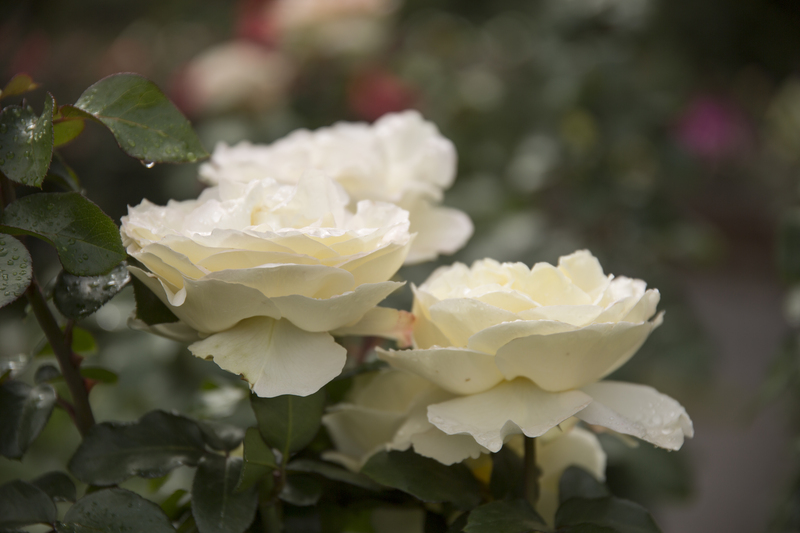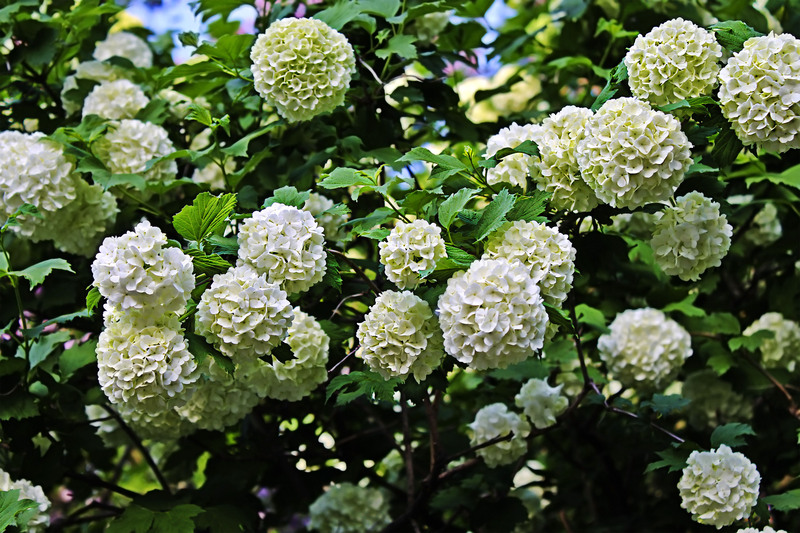The Art and Science of Container Gardening
Posted on 18/09/2025
The Art and Science of Container Gardening
Container gardening has revolutionized the way urban dwellers, home gardeners, and green enthusiasts grow plants. Whether you have a sprawling backyard or a modest apartment balcony, the flexibility and charm of growing plants in containers make gardening accessible, enjoyable, and rewarding. In this comprehensive guide, we explore the techniques, benefits, and science behind the thriving art of container gardening, offering essential tips and expert advice for beginners and seasoned gardeners alike.
Understanding Container Gardening: An Overview
At its core, container gardening involves growing plants in pots, boxes, or any type of enclosed vessel instead of the ground. This method offers mobility, versatility, and the ability to cultivate a wide variety of plants, from vibrant flowers and lush foliage to herbs, vegetables, and even fruit trees. The science behind container gardening ensures optimal use of limited space, water, and resources while embracing creative design and aesthetics.
Why Choose Container Gardening?
- Limited Space Solutions: Ideal for balconies, patios, rooftops, and indoor spaces.
- Soil Control: Allows precise management of soil quality and type for specific plants.
- Mobility: Move plants to access sunlight, shelter from harsh weather, or redecorate your space.
- Pest and Disease Management: Easier to isolate and treat plant issues compared to traditional gardens.
- Diverse Plant Choices: Grow exotic, tropical, or even desert plants not suited for your native soil.

The Science Behind Successful Container Gardening
The success of any container gardening project hinges on understanding certain horticultural principles. Every decision--from container selection to soil type--affects plant health and productivity. Let's break down the science that makes this innovative gardening method so effective.
Choosing the Right Container
Container selection is about more than aesthetics. The size, material, and drainage capacity of your pots significantly influence plant growth:
- Size matters: Large containers retain moisture longer and support bigger root systems, while smaller pots are best for compact or shallow-rooted plants.
- Materials: Clay or terra cotta pots are porous and provide better airflow, but dry quickly. Plastic pots hold moisture but might lack breathability.
- Drainage: Ensure every container has holes to prevent waterlogging and root rot.
The Importance of Soil Selection
Soil in container gardening must balance airflow, nutrients, drainage, and water retention. Avoid using regular garden soil--it is often too heavy and can compact easily, reducing root development.
- Potting Mix: Use commercial potting mixtures, which are lightweight and specifically designed for container plants.
- Amendments: Add perlite or vermiculite for drainage, coconut coir or peat moss for water retention, and compost for nutrients.
- pH and Microbes: Monitor pH levels for specific plants and incorporate beneficial microbes for improved nutrient uptake.
Irrigation: Water is Key
Watering practices make or break a container garden. Because pots dry out faster, consistent and adequate watering is crucial.
- Frequency: Check soil moisture daily. In warm weather, some plants may require watering twice a day.
- Deep, Infrequent Watering: Encourage deep root growth by watering thoroughly until water drains out the bottom.
- Self-Watering Pots: These can reduce watering frequency and maintain consistent moisture levels.
The Art of Creating Beautiful Container Gardens
While science ensures the health of your plants, the art of container gardening enhances your space with color, texture, and style. Thoughtful arrangement transforms simple containers into living masterpieces.
Design Principles for Stunning Container Gardens
- The Thriller, Filler, and Spiller Technique: Combine tall, eye-catching "thriller" plants, space-filling "fillers," and cascading "spillers" that drape over the edges.
- Color Schemes: Use complementary or monochromatic colors for visual harmony. Bold contrasts create excitement; soft palettes evoke tranquility.
- Texture and Form: Mix plants with different leaf shapes, sizes, and textures for added depth and interest.
- Seasonal Interest: Rotate annual flowers, evergreens, or foliage to ensure your containers look great year-round.
Creative Container Ideas
- Repurposed Items: Use vintage buckets, wooden crates, or old teapots for a charming, rustic look.
- Vertical Gardening: Stack containers, use wall-mounted pots, or hanging baskets to maximize vertical space.
- Grouped Arrangements: Cluster pots of varying heights and sizes for a lush, layered effect.
- Edible Gardens: Grow herbs, lettuces, and dwarf vegetables for both beauty and bounty.
Common Plants for Container Gardening
Many plants thrive in containers. The options are limited only by the size and environment of your space. Here are some popular container gardening plants to consider:
- Herbs: Basil, thyme, mint, parsley, cilantro, and chives.
- Vegetables: Tomatoes, peppers, lettuce, spinach, radishes, and dwarf beans.
- Flowers: Petunias, geraniums, marigolds, pansies, begonias, and impatiens.
- Shrubs and Trees: Dwarf citrus, Japanese maple, rosemary, and boxwood.
- Succulents and Cacti: Jade plant, echeveria, and aloe vera, perfect for low-water environments.
Maintenance and Troubleshooting in Container Gardening
Fertilizing for Optimal Growth
Unlike ground soil, container plants quickly use up available nutrients and need regular fertilization to thrive.
- Slow-Release Fertilizers: Mix into the potting soil to provide continuous nutrition for weeks or months.
- Liquid Fertilizers: Apply during watering every 2-4 weeks for a quick nutrient boost.
- Organic Amendments: Use compost tea, worm castings, or seaweed extracts for sustainable growth.
Dealing with Pests and Diseases
The enclosed environment of container gardens often makes pest management easier. However, vigilance is required:
- Regular Inspections: Check leaves, stems, and soil for aphids, mites, and fungal diseases.
- Isolation: Move infected pots away from healthy plants to prevent spread.
- Natural Solutions: Use neem oil, insecticidal soap, or introduce beneficial insects like ladybugs.
- Proper Hygiene: Clean containers between plantings to remove pathogens.
Troubleshooting Common Problems
- Wilting: Check soil moisture and roots; both underwatering and overwatering can cause wilting.
- Yellowing Leaves: May indicate nutrient deficiency or poor drainage.
- Root Bound Plants: Roots circling the pot can stifle growth; repot into a larger container when needed.
- Poor Flowering or Fruiting: Ensure adequate sunlight, feeding, and appropriate pot size for the plant species.
Container Gardening for Small Spaces and Urban Living
Container gardening brings the joy of cultivation to spaces where traditional gardens are impossible. Urban gardeners can transform balconies, patios, and rooftops into lush oases bursting with life.
- Maximize Vertical Space: Use shelves, trellises, and hanging planters.
- Choose Compact Varieties: Opt for bush-type vegetables, miniature fruit trees, or dwarf shrubs.
- Mobile Gardens: Place containers on rolling casters for easy repositioning.
- Window Boxes: Beautify apartment windows while growing fresh herbs just steps away from your kitchen.
Sustainability and Environmental Benefits of Container Gardening
The impact of eco-friendly container gardening is profound, especially in urban areas. By growing food and ornamentals in containers, gardeners contribute to sustainability in several ways:
- Reduced Water Usage: Containers focus water directly on the roots, minimizing waste.
- Local Food Production: Home-grown herbs and vegetables cut down on supermarket packaging and transportation emissions.
- Recycled Materials: Repurpose household items as unique plant containers.
- Improved Air Quality: Even a few potted plants help filter toxins and increase oxygen indoors.
Expert Tips for Thriving Container Gardens
- Start Small: Begin with a few containers to build confidence and observe plant preferences.
- Rotate Plants: Adjust container positions to optimize sunlight over the seasons.
- Mulch the Surface: Use pebbles, bark, or moss to retain moisture and suppress weeds.
- Know Your Climate: Choose container plants suited for your zone and weather patterns.
- Stay Inspired: Visit botanical gardens, online forums, or local plant societies for fresh ideas and troubleshooting tips.

The Future of Container Gardening: Innovation and Trends
As urbanization increases, the demand for innovative gardening methods like container and vertical gardening is on the rise. Smart planters, self-watering systems, and compact hydroponics make container gardening even more appealing. Community gardens in shared urban spaces use portable containers to create movable green sanctuaries, while apartment dwellers experiment with indoor edible gardens year-round.
The creative and scientific possibilities for container gardening are truly endless. Whether you're growing heirloom tomatoes in a city loft or cultivating succulents in sunny windowsills, container gardening bridges the gap between art and science, offering beauty, bounty, and wellbeing at every scale.
Conclusion: Cultivating Joy with Container Gardening
The art and science of container gardening empower anyone to enjoy plants, no matter the size of their space. Embrace the freedom, convenience, and creativity that comes with growing in containers. With a touch of inspiration and a foundation in horticultural best practices, your container garden can flourish into a stunning and sustainable retreat. Start your journey today and let each container become a canvas for your gardening masterpiece.

